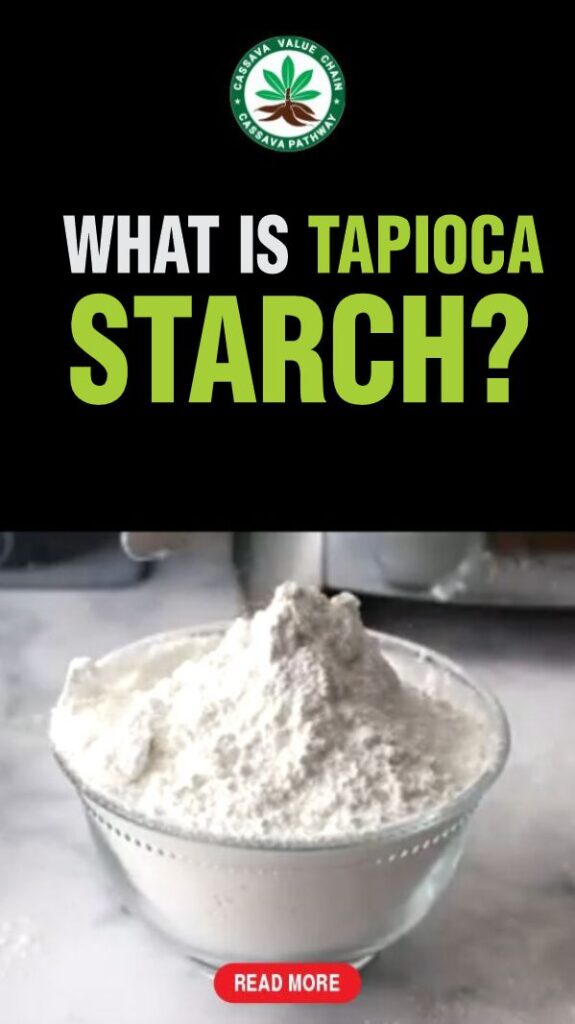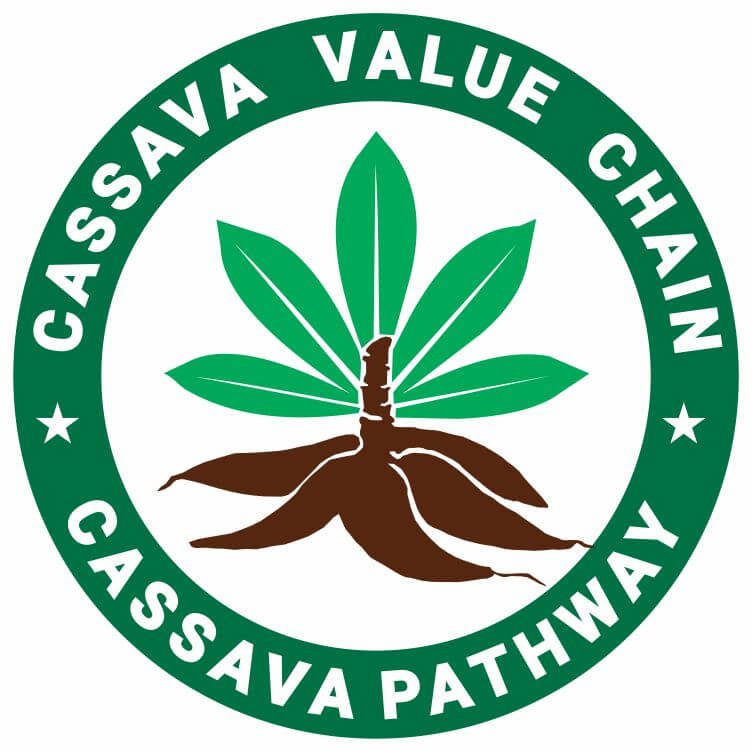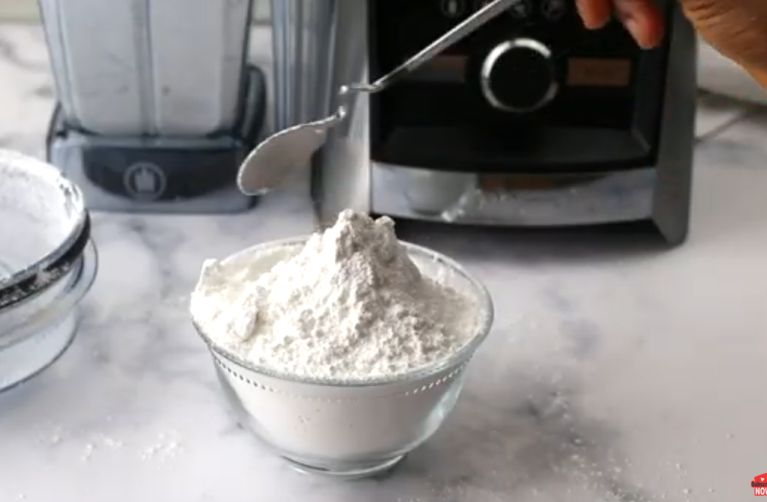What is tapioca starch? Transforms everyday recipes with its silky texture, neutral taste, and crisp finish, ideal for gluten-free baking, thickening sauces, or crafting chewy boba pearls without digestive stress.
Tapioca starch, a form of tapioca different from cassava starch, continues to rise in popularity, especially among those embracing gluten-free and allergy-conscious lifestyles.
Extracted from the cassava root, it’s widely used for its remarkable ability to replicate the texture and structure often lost in wheat-free recipes.
Unlike cassava starch, which is less processed, tapioca starch undergoes a refined extraction process that amplifies its thickening and moisture-binding capabilities, making it a go-to choice for baked goods, sauces, and chewy-textured treats.
Its neutral flavor allows it to work across sweet and savory applications without altering taste.
As more cooks seek clean-label, plant-based ingredients that perform reliably under heat and in diverse recipes, tapioca starch stands out for its consistency and culinary adaptability.
Recommended: Quick and Easy Tapioca Recipes

Main Points
- Tapioca starch, derived from the cassava root, serves as a gluten-free alternative in baking, offering texture, crispness, and smoothness for various dishes.
- Extracted through a refined process, tapioca starch excels as a thickening agent for sauces, soups, and gravies without altering flavor or color.
- This starch provides a quick energy boost, though it lacks protein, fat, and fiber, making it suitable for those needing quick, digestible carbs.
- Tapioca starch plays a key role in diverse global cuisines, from traditional desserts to bubble tea, and supports industries like biodegradable plastics and adhesives.
What is Tapioca Starch?
Tapioca starch, different from cassava starch, is the purified cassava starch extracted from the yuca root. You’ll recognize it as a fine white powder that feels soft between your fingers and blends easily into liquids.
When heated with water, it turns into a smooth, gel-like paste that works well for thickening soups, sauces, and pie fillings.
It also helps give baked goods a chewy or crisp texture, depending on how you use it.
You might use it in place of wheat flour if you’re cooking gluten-free. It’s naturally free from gluten, grains, and common allergens.
Unlike cassava flour or cassava starch, which may contain fiber or other plant parts, tapioca starch is purely the starch component.
Related: Tapioca What is it Made From and Made of?
How Tapioca Starch is Made
Tapioca starch is extracted from the cassava plant, a starchy root grown in tropical regions.
The process starts with harvesting mature cassava roots, which are thoroughly washed to remove dirt and debris.
After peeling off the outer skin, the roots are crushed or grated into a pulp to release the starch.
Water is added to this pulp, allowing the heavier starch to sink while the lighter fibers float.
This natural separation method, known as sedimentation, lets the starch settle at the bottom.
Once the fibrous layer is removed, the remaining starch is washed again to improve purity, texture, and color.
The clean starch is then dried using either air drying or heated drums to reduce the moisture content and prevent spoilage.
The final product is either food-grade or industrial-grade starch.
Food-grade starch is safe for cooking, baking, and making products like boba pearls. Industrial-grade starch is used in paper, textiles, and biofuel production.
Each step ensures quality and usability in different applications. See a dedicated post on how tapioca flour and starch are made.
Related Posts
- Tapioca Flour: Benefits and Uses
- Chemical Modification of Tapioca Starch
- Resistant Tapioca Starch: Everything to Know
- Best Tapioca Starch Substitute
- What is Modified Tapioca Starch?
- How to Make Tapioca Sticks
- Tapioca and Cornstarch: How do they Differ?
- Are Cassava Syrup the Same with Tapioca Syrup?
Nutritional Profile of Tapioca Starch
Tapioca starch is a pure carbohydrate source extracted from the cassava root. It provides quick energy but lacks protein, fat, and fiber.
While it doesn’t offer many nutrients, it plays a valuable role in various diets, especially for those needing gluten-free or grain-free alternatives.
Carbohydrate Content: A Quick Energy Source
Starch from cassava is almost entirely carbohydrates, making up about 88 to 90 percent of its composition. With roughly 350 calories per 100 grams, it serves as a high-energy food.
This makes it useful for individuals needing extra calories, such as athletes or those recovering from illness.
Lack of Protein and Fat
Unlike whole grains, legumes, or nuts, starch from tapioca contains no protein or fat.
While this makes it easy to digest, it doesn’t support muscle growth, satiety, or essential bodily functions that rely on proteins and healthy fats.
This is why it should be paired with other nutrient-rich foods.
No Fiber: What That Means for Digestion
Cassava starch lacks dietary fiber, which plays a role in digestion, gut health, and blood sugar regulation.
Unlike cassava flour, which contains fiber from the whole root, the starch is stripped of fiber during processing.
This makes it easier to digest but means it won’t help with satiety or digestive regularity.
Gluten-Free and Allergen-Friendly
One of the biggest benefits of this starch is that it’s naturally gluten-free, making it safe for people with celiac disease or gluten sensitivity.
It’s also free from common allergens like nuts, soy, and dairy, which is why it’s a common ingredient in allergen-friendly recipes.
How to Use It in a Balanced Diet
Since the starch from cassava is mainly starch with no protein, fat, or fiber, it’s best to combine it with nutrient-dense foods.
Use it in recipes alongside protein sources, vegetables, or whole grains to create balanced meals.
Tabulated Nutritional Profile of Tapioca/Cassava Starch
| Nutrient | Amount per 100g | Key Insights |
|---|---|---|
| Carbohydrates | 88–90g | Main energy source; provides quick calories but lacks fiber. |
| Calories | ~350 kcal | High-calorie food, useful for energy needs like athletic performance or recovery. |
| Protein | 0g | Does not support muscle growth or bodily functions relying on protein. |
| Fat | 0g | Lacks essential fatty acids needed for overall health. |
| Fiber | 0g | Does not aid digestion or promote gut health. |
| Gluten | None | Safe for those with celiac disease or gluten intolerance. |
| Allergens | None | Free from common allergens like nuts, soy, and dairy. |
| Best Use | Thickener, baking, binding agent | Should be combined with protein, fiber, and fats for a balanced diet. |
The starch of tapioca provides energy but lacks key nutrients. Pair it with whole foods for balanced nutrition.
Related: Why You Should Be Concerned about the Cassava Glycemic Index
Characteristics of Tapioca Starch
Tapioca starch has several qualities that make it an essential ingredient in many recipes.
Neutral Flavor
Tapioca starch stands out for its neutral flavor. This makes it perfect for both sweet and savory dishes, as it won’t alter the taste of your food. It’s commonly used to thicken soups, sauces, and gravies without changing the overall flavor.
Appearance
The white color of tapioca starch adds to the visual appeal of dishes. This quality, combined with its high starch content, makes it a favorite in the food industry.
Whether you’re cooking or baking, tapioca starch helps create an inviting look for your recipes.
Gelatinization
When heated, tapioca starch absorbs water and swells, forming a gel-like consistency.
This process, called gelatinization, helps provide structure and moisture retention, especially in gluten-free recipes. It’s a valuable alternative to wheat-based flours in baking.
Thickening Power
Tapioca starch is known for its ability to create a glossy and transparent finish in sauces and fillings.
Unlike other starches like corn or potato starch, which can make mixtures appear cloudy, tapioca starch results in a smooth, clear look.
Shelf Stability
One of tapioca starch’s strengths is its shelf stability. It retains its texture and performance over time, making it a great ingredient for long-term storage.
Whether for home use or large-scale food production, it can be stored without worrying about spoilage.
Texture
Tapioca starch also contributes to the texture of dishes. It creates a smooth mouthfeel, enhancing the consistency of puddings, baked goods, and fried coatings.
Its ability to improve texture makes it a go-to for chefs and home cooks alike.
Related: How to Handle the Tapioca Starch Glycemic Index
Culinary Uses of Tapioca Starch
Tapioca starch, derived from cassava starch, is stripped of many nutrients and properties, but is also a popular ingredient in kitchens worldwide.
Tapioca starch is particularly favored in gluten-free cooking and baking for its unique ability to provide texture, crispness, and smoothness.
Here are its key culinary uses:
1. Thickening Agent for Soups, Sauces, and Gravies
Tapioca starch is often used as a thickener in both savory and sweet dishes. When mixed with water and heated, it forms a clear, smooth gel that thickens liquids without altering the flavor:
- Soups and broths: Tapioca starch helps achieve a velvety consistency in both clear and creamy soups.
- Gravy: It gives gravies a shiny, thick finish, ideal for a variety of meat dishes.
- Sauces: Common in stir-fries and curries, where it imparts a glossy and smooth texture.
Tapioca starch is especially prized for its ability to create a glossy finish, making it the go-to choice in many Asian cuisines.
2. Gluten-Free Baking
As a gluten-free flour, tapioca starch is a staple in gluten-free baking. It is used to enhance the texture, structure, and moisture retention in:
- Breads: When combined with other gluten-free flours, it helps achieve elasticity and chewiness.
- Cakes and Muffins: Tapioca starch contributes to the light, tender crumb of gluten-free cakes and muffins.
- Cookies and Pastries: It adds a soft and chewy texture to cookies and flaky pastries.
Tapioca starch is often used in combination with other gluten-free ingredients like rice flour and potato starch to create balanced, moist baked goods.
3. Crisping Agent in Frying and Coating
Tapioca starch excels at creating a crisp, golden crust, making it an excellent choice for deep frying and coating:
- Fried foods: They provide a light, crisp texture to items like fried chicken, fish, and tofu.
- Tempura: In Asian cuisine, tapioca starch is commonly used to coat vegetables or seafood for a crunchy, delicate batter.
- Spring rolls: It gives a crisp outer layer when used in the wrapping of spring rolls.
Its ability to produce a delicate, crisp crunch with minimal oil absorption makes it a favorite in frying applications.
4. Puddings, Custards, and Desserts
Tapioca starch is the primary ingredient in tapioca pudding, a beloved dessert in many cultures. It helps to:
- Set and thicken: Tapioca starch gives puddings, custards, and pie fillings their smooth and thick consistency.
- Add texture: In tapioca pudding, small pearls of tapioca starch create a chewy texture that is a signature of the dish.
- Dessert fillings: Tapioca starch is also used in sweet fillings for pastries and tarts, offering both structure and consistency.
Its ability to create a creamy, silky texture makes it indispensable in many classic dessert recipes.
5. Beverage and Smoothie Thickeners
Tapioca starch is often used in beverages to improve mouthfeel and texture. It is commonly found in:
- Bubble tea (Boba tea): Tapioca pearls, made from tapioca starch, provide a chewy, satisfying texture in this popular drink.
- Smoothies and shakes: A small amount of tapioca starch can thicken and smooth out beverages, creating a creamy consistency without overpowering the flavor.
- Juices: It can also be used to suspend fruit particles in fruit juices, giving a pleasant, smooth finish.
Tapioca starch’s neutral flavor ensures it blends seamlessly into liquids without altering the taste.
6. Binding Agent in Meat and Vegetarian Products
Tapioca starch serves as a binding agent in various food products, helping to hold ingredients together while maintaining a tender texture:
- Meatballs and sausages: It binds meat and vegetables together, preventing crumbling.
- Vegetarian patties and falafel: It helps create a cohesive structure without the need for eggs or gluten, making it perfect for plant-based recipes.
Tapioca starch adds moisture and structure, helping these products retain their shape during cooking.
7. Used in Traditional Dishes Across Cultures
Tapioca starch is essential in many traditional dishes, especially in Southeast Asia, the Caribbean, and South America:
Caribbean: Tapioca starch is used in traditional puddings and savory dishes.
Southeast Asia: In countries like Thailand and Vietnam, tapioca starch is used in various desserts, dumplings, and noodle dishes.
Brazil: Tapioca flour is the base for making tapioca crepes, which are filled with savory or sweet ingredients.
Health Benefits of Tapioca Starch
Tapioca starch, made from the cassava root, offers several health benefits, especially for those with dietary restrictions.
Gluten-Free Alternative
Tapioca starch is naturally gluten-free, making it a great option for anyone with celiac disease or gluten sensitivity.
You can enjoy a variety of foods without worrying about gluten-related reactions.
Easy to Digest
This starch is easy for your body to break down. Since it’s primarily carbohydrates, it’s gentle on the stomach and quickly provides energy.
If you’re recovering from digestive issues or have a sensitive stomach, tapioca starch can be a great choice to avoid discomfort while still getting the fuel your body needs.
Quick Energy Boost
Tapioca starch is a quick source of energy, which is why athletes often use it before or after workouts.
It gives you the fuel you need without making digestion a heavy task, helping you stay energized throughout the day.
Low in Fat and Sodium
With low levels of fat and sodium, tapioca starch supports heart health and weight management.
It’s a smart choice for those keeping an eye on their fat intake or sodium levels, allowing you to stick to a healthier eating plan.
Low in Allergens
Tapioca starch is low in allergens, making it a safe ingredient for many people.
It can be used in a variety of dishes, from baked goods to sauces, without compromising on taste or texture.
Tapioca Starch in the Cassava Value Chain
Tapioca starch is a vital component in the cassava value chain, transforming the raw cassava root into a high-value product used across various industries.
In the food sector, tapioca starch is primarily used as a thickener in sauces, soups, and desserts, and as a key ingredient in gluten-free products.
It also serves in the production of boba pearls for bubble tea.
Beyond food, tapioca starch is used in manufacturing biodegradable plastics, adhesives, and paper products, contributing to sustainable alternatives in industries.
The processing of tapioca starch adds value to cassava, generating economic opportunities for producers, processors, and local communities, driving growth in agriculture and related sectors, especially in regions where cassava is a staple crop.
Common Products Made with Tapioca Starch
Tapioca starch is used in many food products, thanks to its ability to improve texture and moisture. Here are some common products where tapioca starch plays a key role:
Boba (Tapioca Pearls)
Tapioca pearls, also known as boba, are the most recognized product made with tapioca starch.
These chewy, round balls are essential in bubble tea, providing a fun texture.
To make boba, tapioca starch is combined with water to form a dough, which is then shaped into pearls and cooked.
Gluten-Free Noodles
Tapioca starch is commonly used to make gluten-free noodles. When blended with rice flour or other gluten-free flours, it creates a chewy texture perfect for dishes like pad thai or noodle soups.
These noodles cater to people with gluten sensitivities and are popular in both restaurants and home kitchens.
Flatbreads
Tapioca starch also appears in gluten-free flatbreads. These wraps or pizza bases provide a soft and pliable alternative to wheat-based products.
They are great for anyone avoiding gluten but still craving something similar to traditional bread.
Gluten-Free Baked Goods
Tapioca starch is a key ingredient in many pre-packaged gluten-free baked goods like bread, muffins, and cookies.
It contributes to the texture and helps retain moisture, ensuring these treats stay soft and fresh longer.
Snack Foods
In snack foods, tapioca starch acts as a binding agent and thickener. It’s commonly used in products like crisps, puffs, and spring rolls to give them that perfect crunch.
Tapioca starch also helps in frying by creating a crispy outer layer and reducing oil absorption.
Tapioca Starch vs Cassava Starch: What’s the Difference?
Cassava starch and tapioca starch come from the same source, the cassava root, but they are not the same. We are putting both here together because they are inseparable.
Okay, not quite, but their production process takes the same route.
Cassava starch is the primary starch extracted from the cassava root through grating, soaking, and separating the starch-rich liquid, which is then dried into a powder, as you can see here.
Tapioca starch, on the other hand, is a more refined version of cassava starch.
After the initial extraction, the starch undergoes additional purification processes to remove fibers, proteins, and other residues.
This extra refinement gives tapioca starch its finer texture, higher purity, and more neutral taste, making it especially desirable for delicate food products and industrial uses.
While all tapioca starch is derived from cassava starch, not all cassava starch meets the refinement level to be called tapioca starch.
So, they’re closely related, but not interchangeable in every use.
Tapioca Starch: Best for Thickening and Glossy Finishes
Tapioca starch is finely ground and has a neutral flavor, making it perfect for thickening soups, sauces, and desserts.
It creates a smooth, gel-like consistency when heated and doesn’t change the flavor of your dishes.
If you need a glossy finish, like for fruit glazes or puddings, tapioca starch is your go-to. It also maintains its clarity once cooled, making it ideal for such applications.
Cassava Starch: Best for Baked Goods
Cassava starch, while also derived from the cassava root, is less processed and has a stronger, more natural flavor.
It behaves more like wheat flour and is often used in baking to provide a light texture and chewy consistency.
This makes cassava starch a great option for grain-free baking, like bread or pastries. It’s often preferred by those avoiding grains but still craving the texture of traditional baked goods.
Which Should You Choose?
The choice between tapioca starch and cassava starch depends on your recipe’s needs. If you need a thickener or want a glossy finish, tapioca starch is a better option.
For baking goods with a light, chewy texture, cassava starch is your best bet. Knowing these differences helps you make the right choice for your dishes.
Tapioca Starch vs Tapioca Flour vs Cassava Flour: The Differences
You’ve probably seen tapioca starch, tapioca flour, and cassava flour used in recipes, sometimes interchangeably.
They all come from the cassava root, but they are not the same. Their differences affect texture, taste, and how they work in cooking and baking.
While tapioca/cassava starch and tapioca flour are under the umbrella name “tapioca”, cassava flour is entirely different.
Many brands treat tapioca starch and tapioca flour as the same thing. However, depending on processing methods, there can be subtle differences but in this article, we will treat both as the same.
Starch from tapioca is extracted from cassava through a process of washing, pulping, and drying, resulting in a fine, powdery starch.
The flour, in some cases, may retain more of the root’s natural components, which can slightly alter texture and flavor.
Cassava flour is not just starch, it’s made from the whole cassava root, giving it more fiber and nutrients. It has a coarser texture and a mild, earthy taste, making it a popular alternative in gluten-free baking.
See our dedicated post on the difference between tapioca/cassava starch and tapioca flour.
How to Store Tapioca Starch
To keep tapioca starch fresh, store it in a cool, dry place, away from direct sunlight. A pantry or cupboard is ideal, as they offer stable temperatures.
Use an airtight container to protect it from moisture, air, and odors, which can affect its quality. With proper storage, tapioca starch lasts between 1 to 2 years.
Before using, check for any signs of spoilage, such as an off smell, discoloration, or insects. If you notice any of these, it’s best to discard the starch to ensure safety and quality.
Frequently Asked Questions
What is tapioca starch used for?
Tapioca starch is used for thickening sauces, soups, gravies, and as a gluten-free binder in baking, adding texture and structure to various dishes.
Is tapioca starch gluten-free?
Yes, tapioca starch is naturally gluten-free, making it an ideal choice for people with celiac disease or gluten sensitivity in recipes and baked goods.
Can tapioca starch replace wheat flour?
Yes, tapioca starch can replace wheat flour in gluten-free recipes, adding chewiness to baked goods and acting as a thickening agent in sauces.
Is tapioca starch good for health?
Tapioca starch provides quick energy but lacks protein, fat, and fiber. It’s beneficial for energy needs, but should be combined with other nutrient-rich foods for balance.
How is tapioca starch made?
Tapioca starch is made by extracting starch from cassava roots, separating fibers through water sedimentation, and drying the resulting pure starch, which is then used in food and industrial products.
Final Thoughts
Tapioca starch is a key ingredient in many kitchens, especially for gluten-free cooking.
It has a neutral flavor, which makes it perfect for thickening sauces, improving the texture of baked goods, and creating smooth puddings and desserts.
Because it’s easy to digest and offers quick energy, it’s a great option for those with dietary needs. Plus, it’s naturally gluten-free, making it a go-to for those avoiding wheat.
When used with other healthy foods, tapioca starch can help create balanced meals.
But its value goes beyond food, it’s also used in industries like biodegradable plastics, making it an important part of the cassava value chain.
Whether you’re cooking or exploring sustainable alternatives, tapioca starch plays a significant role.
References
- PMC: Impact of Cassava Starch Varieties on the Physiochemical Change during Enzymatic Hydrolysis
- Riken: Healthier Tapioca Starch is on the Way
- ScienceDirect: Tapioca/Cassava Starch: Production and Use

Chimeremeze Emeh is a writer and researcher passionate about Africa’s most transformative root crop—cassava. Through his work at cassavavaluechain.com, he explores the entire cassava industry, from cultivation and processing to its diverse applications in food, health, and industrial use.
He also writes for palmoilpalm.com, where he shares his extensive experience and deep-rooted knowledge of palm oil, covering red palm oil, palm kernel oil, and refined products. His work there reflects his lifelong connection to agriculture and his commitment to promoting sustainable value chains in Africa.
Driven by curiosity and purpose, Chimeremeze aims to shed light on how cassava continues to empower communities, strengthen food systems, and link traditional farming wisdom with modern innovation.

